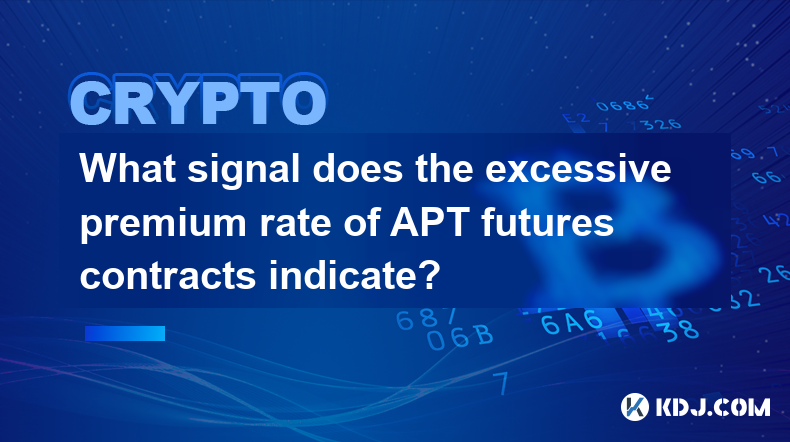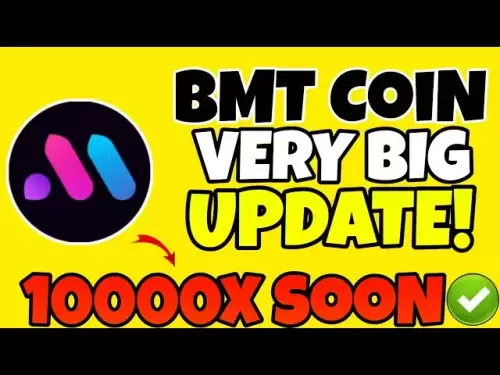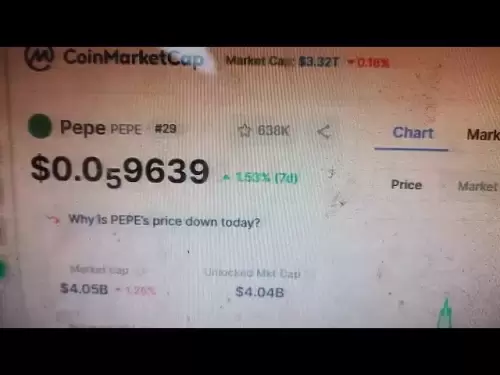-
 Bitcoin
Bitcoin $108,250.0992
0.11% -
 Ethereum
Ethereum $2,515.9404
0.03% -
 Tether USDt
Tether USDt $1.0003
0.00% -
 XRP
XRP $2.2166
-0.19% -
 BNB
BNB $656.5904
0.29% -
 Solana
Solana $147.4122
-0.58% -
 USDC
USDC $1.0000
-0.01% -
 TRON
TRON $0.2830
0.06% -
 Dogecoin
Dogecoin $0.1641
0.27% -
 Cardano
Cardano $0.5739
-0.19% -
 Hyperliquid
Hyperliquid $39.1463
-0.11% -
 Sui
Sui $2.8882
-0.02% -
 Bitcoin Cash
Bitcoin Cash $487.6428
0.31% -
 Chainlink
Chainlink $13.2097
0.07% -
 UNUS SED LEO
UNUS SED LEO $9.0308
0.10% -
 Avalanche
Avalanche $17.8608
0.13% -
 Stellar
Stellar $0.2379
-0.06% -
 Toncoin
Toncoin $2.7400
-0.39% -
 Shiba Inu
Shiba Inu $0.0...01144
-0.36% -
 Litecoin
Litecoin $87.5467
0.66% -
 Hedera
Hedera $0.1538
0.22% -
 Monero
Monero $315.5479
0.36% -
 Dai
Dai $1.0000
0.00% -
 Polkadot
Polkadot $3.3523
-0.71% -
 Ethena USDe
Ethena USDe $1.0003
0.01% -
 Bitget Token
Bitget Token $4.3960
-1.03% -
 Uniswap
Uniswap $7.2663
4.19% -
 Aave
Aave $272.8619
2.04% -
 Pepe
Pepe $0.0...09676
-0.18% -
 Pi
Pi $0.4586
-2.87%
What signal does the excessive premium rate of APT futures contracts indicate?
The excessive premium rate of APT futures often signals strong bullish sentiment and speculation, influencing traders' strategies and market dynamics.
Apr 27, 2025 at 04:56 am

The excessive premium rate of APT futures contracts is a significant indicator within the cryptocurrency market, often signaling various market sentiments and potential future price movements. In this article, we will delve into the meaning behind this phenomenon, its implications for traders, and how it can be interpreted to make informed trading decisions.
Understanding the Premium Rate of Futures Contracts
The premium rate of futures contracts is the difference between the futures price and the spot price of the underlying asset. When the futures price is higher than the spot price, the market is said to be in contango. Conversely, when the futures price is lower than the spot price, the market is in backwardation. The premium rate is a crucial metric for traders as it reflects the market's expectations about the future price of the asset.
In the context of APT (Aptos) futures contracts, an excessive premium rate indicates that the futures price is significantly higher than the current spot price. This situation suggests that traders are willing to pay a higher price for APT in the future, which can be interpreted in several ways.
Market Sentiment and Speculation
An excessive premium rate often reflects strong bullish sentiment among traders. When traders are optimistic about the future price of APT, they are more likely to buy futures contracts at a higher price, driving up the premium rate. This bullish sentiment can be driven by various factors, such as positive news about the Aptos project, anticipated upgrades, or broader market trends favoring cryptocurrencies.
Speculation also plays a significant role in the premium rate. Traders who believe that APT will experience a significant price increase in the future may engage in speculative buying of futures contracts, further pushing the premium rate higher. This speculative activity can create a self-reinforcing cycle where the high premium rate attracts more speculative buying, leading to even higher futures prices.
Liquidity and Market Dynamics
The liquidity of the APT futures market can also influence the premium rate. In a highly liquid market, the premium rate may be more stable and reflective of genuine market sentiment. However, in a less liquid market, the premium rate can be more volatile and susceptible to manipulation by large traders or market makers.
Market dynamics such as the entry and exit of large institutional investors can also impact the premium rate. If institutional investors with significant capital enter the market and start buying APT futures, they can drive up the premium rate due to their large trading volumes. Conversely, if these investors decide to exit their positions, it can lead to a rapid decrease in the premium rate.
Risk and Arbitrage Opportunities
An excessive premium rate presents both risks and opportunities for traders. On the one hand, it can be a signal of potential price appreciation, encouraging traders to take long positions in APT futures. On the other hand, it also increases the risk of a price correction if the market sentiment shifts.
Arbitrage opportunities may arise when the premium rate is excessively high. Traders can exploit the difference between the futures price and the spot price by buying APT at the spot market and simultaneously selling futures contracts. This strategy, known as cash-and-carry arbitrage, can help bring the premium rate back to more sustainable levels.
Impact on Trading Strategies
Traders need to adjust their trading strategies based on the premium rate of APT futures contracts. When the premium rate is excessively high, traders may consider the following strategies:
- Long positions: If traders believe that the bullish sentiment will continue, they may take long positions in APT futures to capitalize on potential price increases.
- Short positions: Conversely, if traders anticipate a correction in the premium rate, they may take short positions to profit from a potential decrease in the futures price.
- Hedging: Traders holding APT in their portfolios may use futures contracts to hedge against potential price declines, especially when the premium rate is high.
Monitoring and Analysis
To effectively interpret the excessive premium rate of APT futures contracts, traders should engage in continuous monitoring and analysis. This involves:
- Tracking market news: Staying updated on news and developments related to the Aptos project can provide insights into the factors driving the premium rate.
- Analyzing market trends: Understanding broader market trends and sentiment can help traders gauge whether the high premium rate is part of a larger bullish trend or a temporary anomaly.
- Using technical analysis: Technical indicators and chart patterns can help traders identify potential entry and exit points for their trades based on the premium rate.
Frequently Asked Questions
Q: How can traders differentiate between genuine bullish sentiment and speculative bubbles in the APT futures market?
A: Traders can differentiate between genuine bullish sentiment and speculative bubbles by analyzing a combination of factors. Genuine bullish sentiment is often supported by fundamental developments within the Aptos project, such as technological upgrades or partnerships. In contrast, speculative bubbles may be driven by hype and social media trends without substantial backing. Monitoring trading volumes, market liquidity, and the consistency of the premium rate over time can also provide clues about the nature of the market sentiment.
Q: What are the potential risks of trading APT futures when the premium rate is excessively high?
A: Trading APT futures when the premium rate is excessively high carries several risks. The primary risk is a potential price correction, where the futures price drops significantly, leading to losses for traders holding long positions. Additionally, high premium rates can be indicative of market manipulation or speculative bubbles, which can burst unexpectedly. Traders should also be aware of the increased margin requirements and potential for higher volatility in such market conditions.
Q: Can the excessive premium rate of APT futures be used as a leading indicator for the spot market?
A: The excessive premium rate of APT futures can sometimes serve as a leading indicator for the spot market, but it is not always reliable. If the high premium rate is driven by genuine bullish sentiment and fundamental developments, it may foreshadow an increase in the spot price. However, if the premium rate is primarily driven by speculation, it may not accurately predict spot market movements. Traders should use the premium rate in conjunction with other indicators and market analysis to make more informed predictions about the spot market.
Disclaimer:info@kdj.com
The information provided is not trading advice. kdj.com does not assume any responsibility for any investments made based on the information provided in this article. Cryptocurrencies are highly volatile and it is highly recommended that you invest with caution after thorough research!
If you believe that the content used on this website infringes your copyright, please contact us immediately (info@kdj.com) and we will delete it promptly.
- Litecoin Breakout Watch: What Traders Need to Know Now
- 2025-07-06 16:50:13
- Bitcoin, Solana, Ethereum: Decoding the Latest Buzz on the Blockchain
- 2025-07-06 16:50:13
- Widnes Resident's 50p Could Be Your Ticket to Easy Street: Rare Coin Mania!
- 2025-07-06 16:55:13
- Bitcoin, Solaris Presale, and Token Rewards: What's the Buzz?
- 2025-07-06 16:55:13
- Ethereum Under Pressure: Price Drop Amid Global Uncertainties
- 2025-07-06 17:00:13
- XRP, SEC Case, and Prosperity: A New Era for XRP Holders?
- 2025-07-06 17:10:13
Related knowledge

How to customize USDT TRC20 mining fees? Flexible adjustment tutorial
Jun 13,2025 at 01:42am
Understanding USDT TRC20 Mining FeesMining fees on the TRON (TRC20) network are essential for processing transactions. Unlike Bitcoin or Ethereum, where miners directly validate transactions, TRON uses a delegated proof-of-stake (DPoS) mechanism. However, users still need to pay bandwidth and energy fees, which are collectively referred to as 'mining fe...

USDT TRC20 transaction is stuck? Solution summary
Jun 14,2025 at 11:15pm
Understanding USDT TRC20 TransactionsWhen users mention that a USDT TRC20 transaction is stuck, they typically refer to a situation where the transfer of Tether (USDT) on the TRON blockchain has not been confirmed for an extended period. This issue may arise due to various reasons such as network congestion, insufficient transaction fees, or wallet-rela...

How to cancel USDT TRC20 unconfirmed transactions? Operation guide
Jun 13,2025 at 11:01pm
Understanding USDT TRC20 Unconfirmed TransactionsWhen dealing with USDT TRC20 transactions, it’s crucial to understand what an unconfirmed transaction means. An unconfirmed transaction is one that has been broadcasted to the blockchain network but hasn’t yet been included in a block. This typically occurs due to low transaction fees or network congestio...

How to check USDT TRC20 balance? Introduction to multiple query methods
Jun 21,2025 at 02:42am
Understanding USDT TRC20 and Its ImportanceUSDT (Tether) is one of the most widely used stablecoins in the cryptocurrency market. It exists on multiple blockchain networks, including TRC20, which operates on the Tron (TRX) network. Checking your USDT TRC20 balance accurately is crucial for users who hold or transact with this asset. Whether you're sendi...

What to do if USDT TRC20 transfers are congested? Speed up trading skills
Jun 13,2025 at 09:56am
Understanding USDT TRC20 Transfer CongestionWhen transferring USDT TRC20, users may occasionally experience delays or congestion. This typically occurs due to network overload on the TRON blockchain, which hosts the TRC20 version of Tether. Unlike the ERC20 variant (which runs on Ethereum), TRC20 transactions are generally faster and cheaper, but during...

The relationship between USDT TRC20 and TRON chain: technical background analysis
Jun 12,2025 at 01:28pm
What is USDT TRC20?USDT TRC20 refers to the Tether (USDT) token issued on the TRON blockchain using the TRC-20 standard. Unlike the more commonly known ERC-20 version of USDT (which runs on Ethereum), the TRC-20 variant leverages the TRON network's infrastructure for faster and cheaper transactions. The emergence of this version came as part of Tether’s...

How to customize USDT TRC20 mining fees? Flexible adjustment tutorial
Jun 13,2025 at 01:42am
Understanding USDT TRC20 Mining FeesMining fees on the TRON (TRC20) network are essential for processing transactions. Unlike Bitcoin or Ethereum, where miners directly validate transactions, TRON uses a delegated proof-of-stake (DPoS) mechanism. However, users still need to pay bandwidth and energy fees, which are collectively referred to as 'mining fe...

USDT TRC20 transaction is stuck? Solution summary
Jun 14,2025 at 11:15pm
Understanding USDT TRC20 TransactionsWhen users mention that a USDT TRC20 transaction is stuck, they typically refer to a situation where the transfer of Tether (USDT) on the TRON blockchain has not been confirmed for an extended period. This issue may arise due to various reasons such as network congestion, insufficient transaction fees, or wallet-rela...

How to cancel USDT TRC20 unconfirmed transactions? Operation guide
Jun 13,2025 at 11:01pm
Understanding USDT TRC20 Unconfirmed TransactionsWhen dealing with USDT TRC20 transactions, it’s crucial to understand what an unconfirmed transaction means. An unconfirmed transaction is one that has been broadcasted to the blockchain network but hasn’t yet been included in a block. This typically occurs due to low transaction fees or network congestio...

How to check USDT TRC20 balance? Introduction to multiple query methods
Jun 21,2025 at 02:42am
Understanding USDT TRC20 and Its ImportanceUSDT (Tether) is one of the most widely used stablecoins in the cryptocurrency market. It exists on multiple blockchain networks, including TRC20, which operates on the Tron (TRX) network. Checking your USDT TRC20 balance accurately is crucial for users who hold or transact with this asset. Whether you're sendi...

What to do if USDT TRC20 transfers are congested? Speed up trading skills
Jun 13,2025 at 09:56am
Understanding USDT TRC20 Transfer CongestionWhen transferring USDT TRC20, users may occasionally experience delays or congestion. This typically occurs due to network overload on the TRON blockchain, which hosts the TRC20 version of Tether. Unlike the ERC20 variant (which runs on Ethereum), TRC20 transactions are generally faster and cheaper, but during...

The relationship between USDT TRC20 and TRON chain: technical background analysis
Jun 12,2025 at 01:28pm
What is USDT TRC20?USDT TRC20 refers to the Tether (USDT) token issued on the TRON blockchain using the TRC-20 standard. Unlike the more commonly known ERC-20 version of USDT (which runs on Ethereum), the TRC-20 variant leverages the TRON network's infrastructure for faster and cheaper transactions. The emergence of this version came as part of Tether’s...
See all articles

























































































